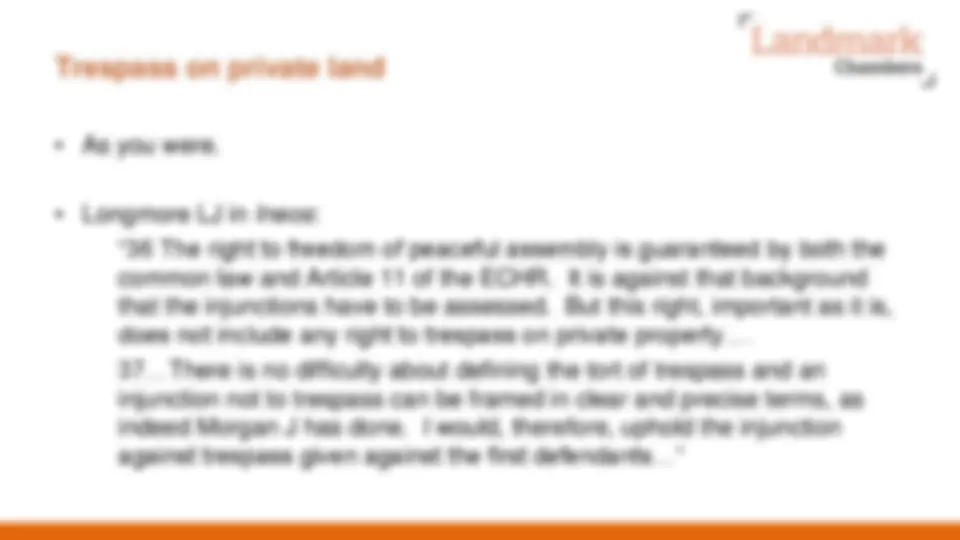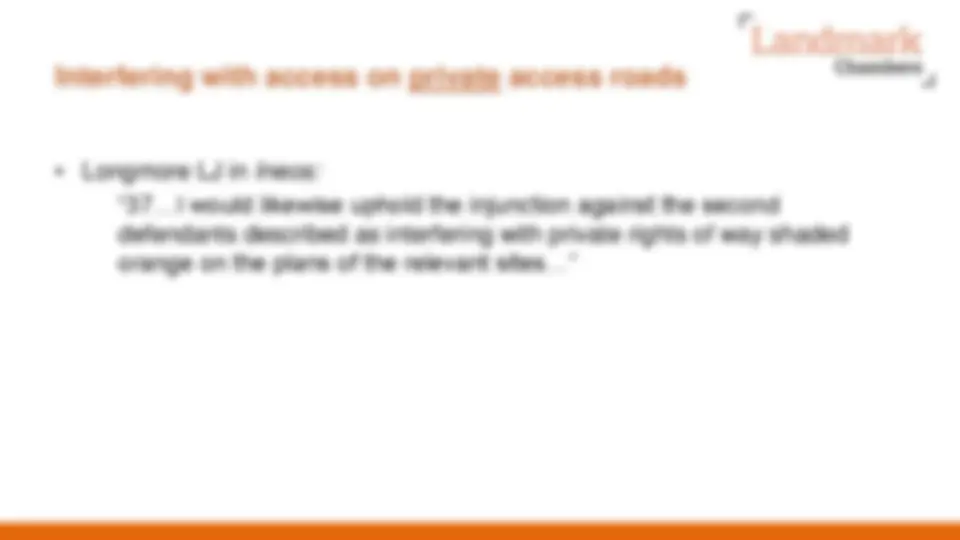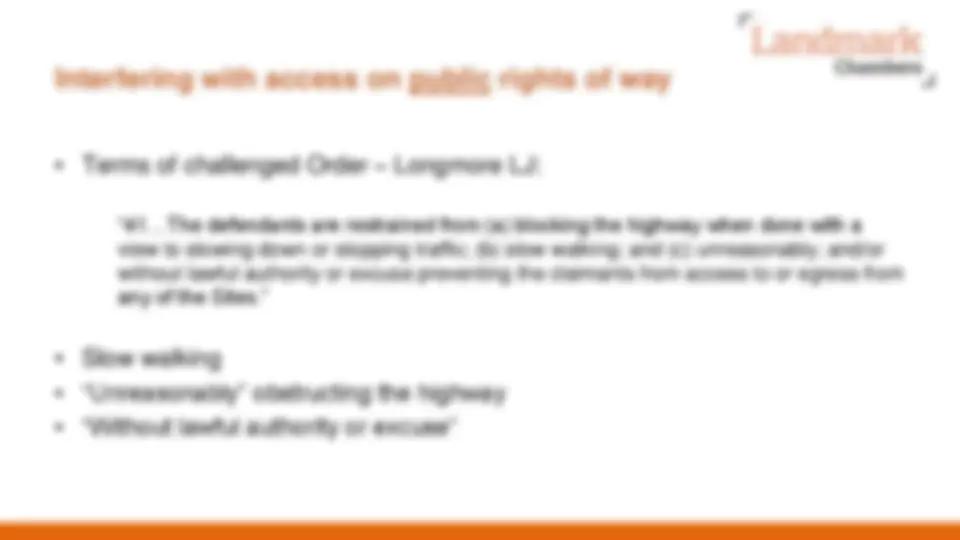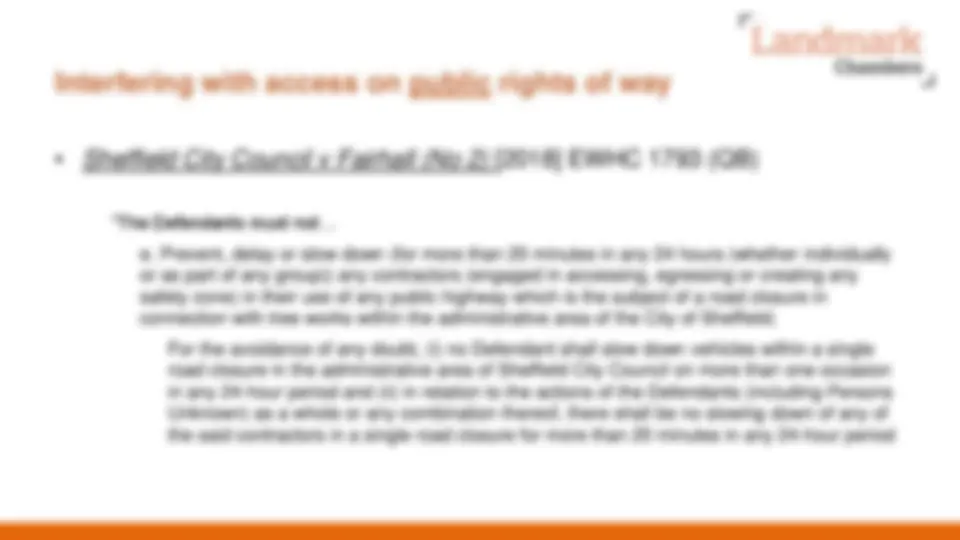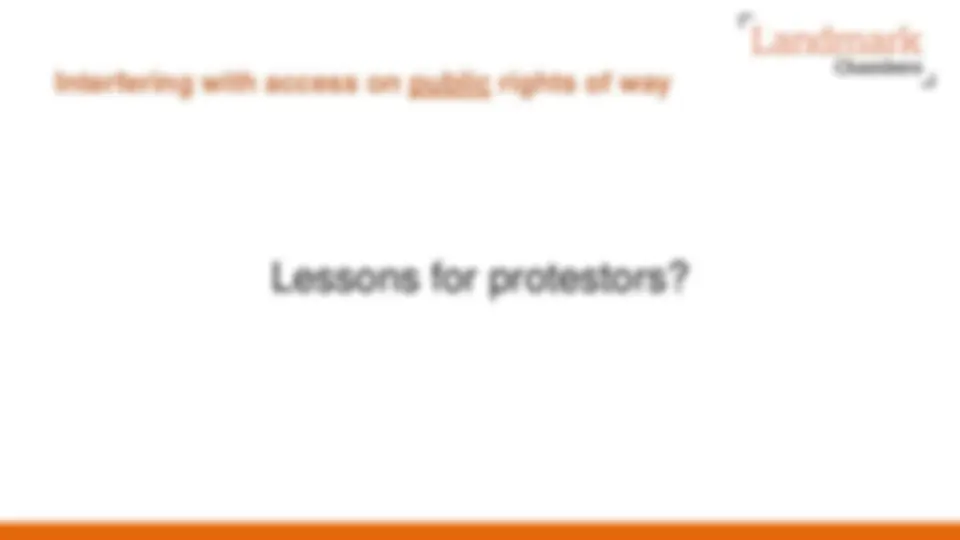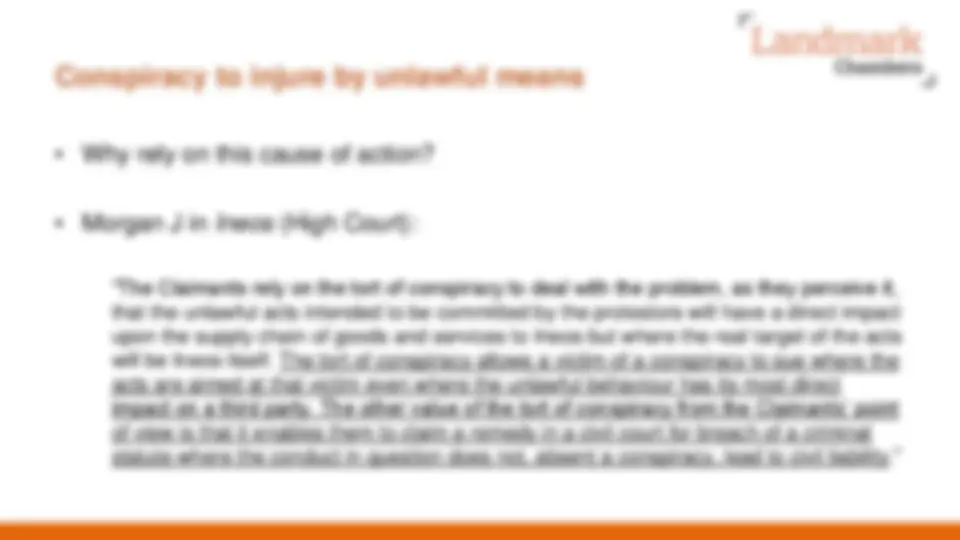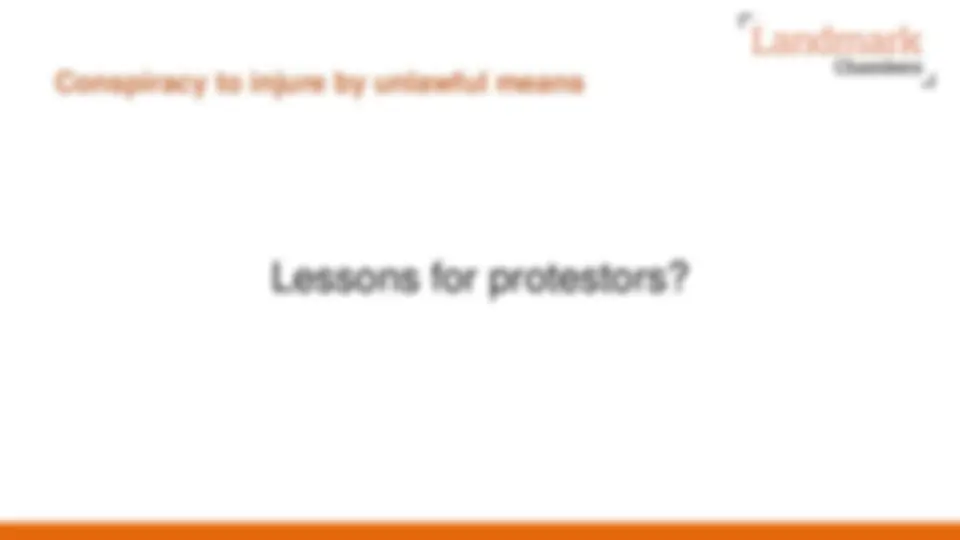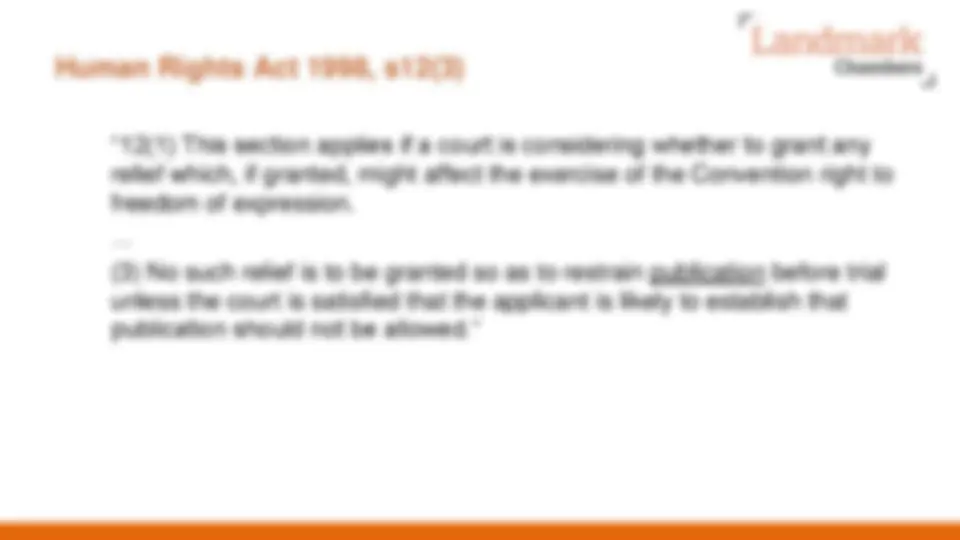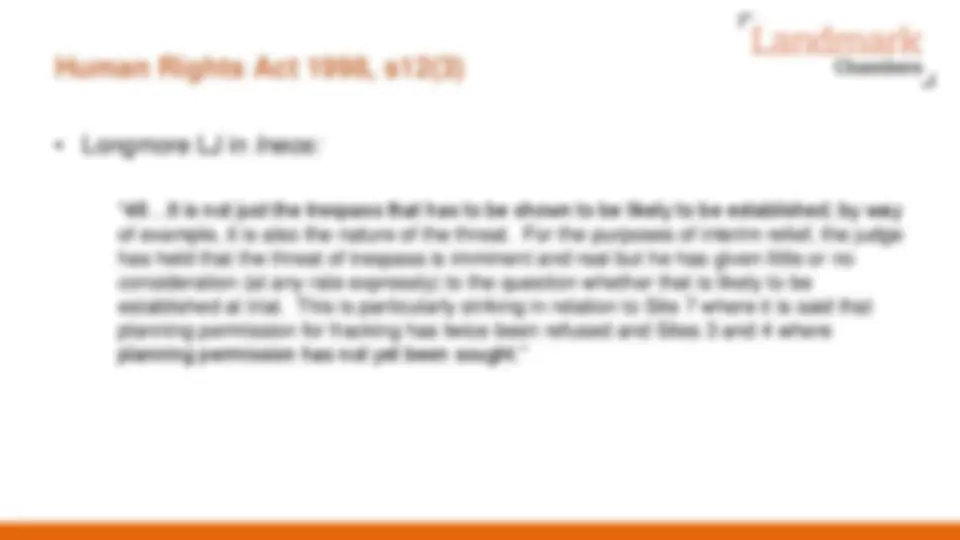Download Legal Analysis: Human Rights & Protests vs. Ineos - Injunctions & Conspiracy and more Lecture notes Human Rights in PDF only on Docsity!
Persons Unknown and Human
Rights after Ineos :
Quia timet injunctions and beyond
Yaaser Vanderman 8 April 2019
Persons Unknown and Human Rights after Ineos
(1) General issues – width and clarity
- Trespass on private land;
- Interfering with access on private access roads;
- Interfering with access on public rights of way; and,
- Conspiring to injure by unlawful means. (2) Section 12(3) Human Rights Act 1998
Interfering with access on private access roads
- Longmore LJ in Ineos: “37…I would likewise uphold the injunction against the second defendants described as interfering with private rights of way shaded orange on the plans of the relevant sites…”
Interfering with access on public rights of way
- Terms of challenged Order – Longmore LJ: “41…The defendants are restrained from (a) blocking the highway when done with a view to slowing down or stopping traffic; (b) slow walking; and (c) unreasonably; and/or without lawful authority or excuse preventing the claimants from access to or egress from any of the Sites.”
- Slow walking
- “Unreasonably” obstructing the highway
- “Without lawful authority or excuse”
Interfering with access on public rights of way
Lessons for injunctors?
Interfering with access on public rights of way
- Sheffield City Council v Fairhall (No 2) [2018] EWHC 1793 (QB) “The Defendants must not… e. Prevent, delay or slow down (for more than 20 minutes in any 24 hours (whether individually or as part of any group)) any contractors (engaged in accessing, egressing or creating any safety zone) in their use of any public highway which is the subject of a road closure in connection with tree works within the administrative area of the City of Sheffield; For the avoidance of any doubt, (i) no Defendant shall slow down vehicles within a single road closure in the administrative area of Sheffield City Council on more than one occasion in any 24-hour period and (ii) in relation to the actions of the Defendants (including Persons Unknown) as a whole or any combination thereof, there shall be no slowing down of any of the said contractors in a single road closure for more than 20 minutes in any 24-hour period
Conspiracy to injure by unlawful means
- Why rely on this cause of action?
- Morgan J in Ineos (High Court): “The Claimants rely on the tort of conspiracy to deal with the problem, as they perceive it, that the unlawful acts intended to be committed by the protestors will have a direct impact upon the supply chain of goods and services to Ineos but where the real target of the acts will be Ineos itself. The tort of conspiracy allows a victim of a conspiracy to sue where the acts are aimed at that victim even where the unlawful behaviour has its most direct impact on a third party. The other value of the tort of conspiracy from the Claimants’ point of view is that it enables them to claim a remedy in a civil court for breach of a criminal statute where the conduct in question does not, absent a conspiracy, lead to civil liability.”
Conspiracy to injure by unlawful means
Difficulties in relying on this tort in future cases: (1) “with the intention to injure…” (2) “causing loss and damage…”
Conspiracy to injure by unlawful means
Lessons for protestors?
Human Rights Act 1998, s12(3)
“12(1) This section applies if a court is considering whether to grant any relief which, if granted, might affect the exercise of the Convention right to freedom of expression. … (3) No such relief is to be granted so as to restrain publication before trial unless the court is satisfied that the applicant is likely to establish that publication should not be allowed.”
Human Rights Act 1998, s12(3)
Effect?
END Yaaser Vanderman 8 April 2019

